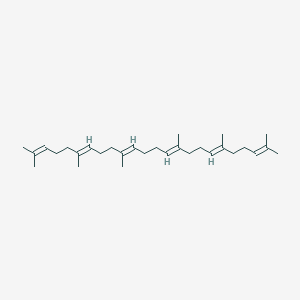The United States observes the chemical reaction of molecules in single cells for the first time.
-
Last Update: 2020-07-07
-
Source: Internet
-
Author: User
Search more information of high quality chemicals, good prices and reliable suppliers, visit
www.echemi.com
bioengineering experts at the University of California, Berkeley, used a nanoparticle technology to detect for the first time the dynamic reaction mechanism of biomolecules in a single cellThis technology is a breakthrough in molecular imaging and will have a profound impact on cell drug development and biomedical diagnosticsThe study was supported by the Korean Ministry of Science and Technology and published in the recent lysis issue of Nature MethodologyProfessor Luke Lee, of the University of California's Center for Biomolecular Nanotechnology, who led the team, said that before this technology, there was no non-destructive method to capture the chemical fingerprints of molecules in cells in the nanoscale
In the past, the biochemical processes of cells have been studied by cutting their outer membranes to analyze their compositions, at a time when the cells are dead and it is not possible to observe the interactions of the various components in real timeNew nanoparticle technology leverages the properties of organic and inorganic molecules to absorb light at a specific frequency, allowing real-time detection of the activity of an enzyme in a cell and whether a gene is expressedThe researchers combined the cytochrome c protein with gold particles 20 nanometers to 30 nanometers one-on-oneWhen illuminated, the surface electrons of the gold particles oscillate at a specific frequency, a phenomenon that is surface kinethresonanceCytochrome c is a protein associated with cell metabolism and death, its photoabsorption peak is near 550 nanometers, nano-gold particles with resonance wavelengths of 530 nanometers - 580 nanometers, the frequency of which is easier to detect than the optical signal of cytochrome cWhen the absorption peak of a biomolecule overlaps with the resonance frequency of gold particles, energy transfer occurs, called quenchingIn this process, the internal structure of biomolecules is clearly shownSimilarly, a similar result was obtained by matching hemoglobin and silver particlesProfessor Li says the light absorption signals from individual biomolecules are so weak that traditional absorption spectroscopy techniques are difficult to detect and photograph, requiring not only a high density of biomolecules but also the killing of millions of cellsAnd this quenching contact requires a small molecular density, as long as hundreds or even dozens of moleculesFor years, there has been much hope that stem cells have been used to treatdisease , but the biggest challenge is to know exactly how individual cells differentiate Why do stem cells develop into heart muscle sesames instead of teeth or hair? To solve the mystery, it is necessary to analyze what proteins or genes inside the cell send out signals These nanoparticles are like stars in the night sky, illuminating the inner life of cells At the same time, the sensitivity of quenching contact and light wave selectivity in this technology also point out a new direction for improving the molecular diagnostic level of disease , and developing individualized medical device
(Reporter Chang Lijun)
This article is an English version of an article which is originally in the Chinese language on echemi.com and is provided for information purposes only.
This website makes no representation or warranty of any kind, either expressed or implied, as to the accuracy, completeness ownership or reliability of
the article or any translations thereof. If you have any concerns or complaints relating to the article, please send an email, providing a detailed
description of the concern or complaint, to
service@echemi.com. A staff member will contact you within 5 working days. Once verified, infringing content
will be removed immediately.







